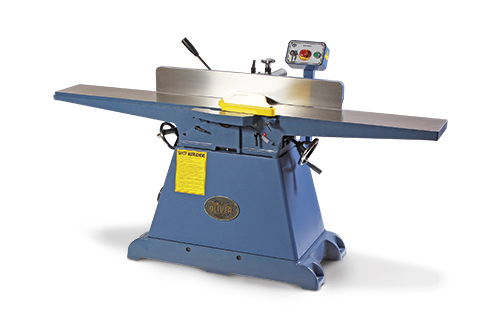
I’ve seen machines called rabetting jointers and others just called jointers. Is there a difference? And which width would you recommend? (And is it called a joiner or jointer & I’m so confused!)
Michael Dresdner: It’s jointer, since it makes a joint (that admittedly will be joined…). A rabbeting jointer has a secondary shelf on the infeed bed that allows you to cut rabbets with the jointer. It is important only if you plan to use it. Obviously, you can also cut rabbets with a tablesaw, hand plane, router, shaper, etc.
Lee Grindinger: A rabbeting jointer has a rabbeting ledge. This ledge is attached to, or is a part of, the infeed table. Very often the guard is mounted to this ledge. It will present itself as several inches wider than the rest of the table. This ledge is there to support the part of the workpiece that is not being rabbeted. In today’s world of routers, dado heads for table saws and large shapers, the rabbeting capability of a jointer is rarely used, especially since the guard has to be removed for the rabbeting operation and the ends of the knives have to be very closely matched. From a safety perspective this technique is no longer recommended.
As to the width… get as wide and as long a jointer as you can afford. All of these machines are called jointers in the USA. They are called surfacers or planers in many other parts of the world.







